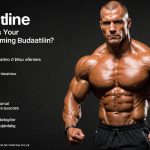Overview of Jump Shot Mechanics
When it comes to basketball training, perfecting your jump shot mechanics is crucial for effective performance enhancement. At its core, the jump shot involves a combination of biomechanics that ensures precision and power. Understanding the key phases can help in refining your technique.
Initially, the jump shot process starts with a ready stance. This sets the stage for optimal muscle engagement. The key phases involve preparation, jump, and follow-through. During preparation, your knees are slightly bent, providing a solid base. This phase requires effective lower body engagement, ensuring explosive power.
The jump phase is where the momentum is generated. Here, your legs work in harmony with your core muscles to propel the body upwards. Proper timing and alignment of the body are essential to maintain balance and accuracy.
Finally, the follow-through is where the shot is released. At this stage, upper body muscles come into play, guiding the ball with a flick of the wrist. The arms should extend fully, ensuring the ball follows the intended trajectory.
Also to discover : Essential Components of an Effective Post-Game Recovery Strategy for UK Basketball Athletes
In mastering these mechanics, the use of targeted basketball training drills can significantly enhance performance, creating a well-rounded player capable of high-percentage shots.
Essential Muscle Groups for Jump Shot Performance
When it comes to excelling in basketball, the power of your jump shot hinges significantly on several muscle groups. The primary players are the quadriceps, hamstrings, calves, and core. Understanding the role of each muscle group can greatly enhance your jumping and overall basketball performance.
Primary Muscle Groups
The quadriceps are crucial for explosive power as they aid in extending the knee, thereby contributing to the upward thrust needed in a jump shot. Strong hamstrings complement the quadriceps by facilitating knee flexion and stability upon landing, which is essential for reducing injury risks.
The calves act as the springboard in the complex mechanism of a jump shot, providing the dernier push-off that propels the body upwards. Engaging and coordinating these muscle groups is vital; a seamlessly integrated effort ensures maximum efficiency and power in the jump.
Muscle Growth and Jump Performance
Through targeted training and exercises, muscle growth in these areas will see direct improvements in jump height and control. Balancing muscle strength with proper technique allows for enhanced jump shot accuracy and performance, ultimately elevating your game. By focusing on training these key muscle groups, players can optimize their basketball skills on the court.
Targeted Exercises for Muscle Development
Engaging in strength training is crucial for athletes, particularly those seeking to enhance their jump shot exercises and overall agility. Effective workout strategies can significantly impact performance improvement and injury prevention.
Lower Body Exercises
Focusing on the lower body is essential for athletes, as it contributes to stability and power. Squats are instrumental in building quadriceps and glute strength, supporting explosive movements. Incorporating plyometrics can further enhance explosive power, vital for quick starts and rapid direction changes. Lunges are another beneficial exercise, known for improving flexibility and stability, key components for maintaining balance during athletic performance.
Core Strengthening
A robust core not only enhances overall strength but also aids in efficient power generation. Plank variations are excellent for achieving core stability, providing a foundation for all athletic movements. Incorporating medicine ball throws builds power and functional strength, whereas Russian twists help develop rotational strength, crucial for executing precise and controlled jump shots.
Calf Conditioning
For those looking to bolster speed and agility, calf-focused exercises are vital. Calf raises promote strength and endurance, offering a solid base for longer performance durations. Integrating box jumps enhances reactive power, imperative for swift movements. Furthermore, agility drills cultivate quickness, sharpening reflexes and improving on-court performance.
Custom Training Tips for UK Basketball Players
When it comes to boosting basketball performance, understanding the right training tips is crucial. To foster optimal muscle gain, players should engage in frequent yet balanced sessions. Ideally, training three to five days a week allows for adequate stimulus and recovery, promoting growth and skill improvement. Each session can range from 60 to 90 minutes, ensuring intensity without overtraining.
Recovery is an often overlooked component but is just as important as the workout itself. Adequate rest and balanced nutrition play pivotal roles in muscle development. Incorporate protein-rich foods, complex carbohydrates, and healthy fats into your diet. These nutrients support muscle repair and provide energy for demanding drills.
Tailoring workout plans to individual needs significantly enhances performance. Consider the athlete’s position, strengths, and areas needing improvement. For instance, a guard might focus more on agility and speed, whereas a center could benefit from strength and power exercises. Customising training not only aligns with specific goals but also maximises efficiency in reaching them.
Stay committed to understanding your body’s unique requirements. By integrating these comprehensive strategies, players will not only enhance their game but also ensure long-term, sustainable development.
Expert Opinions and Research Insights
Understanding the science behind superior athletic performance requires drawing from expert analysis and cutting-edge research. Recent basketball studies have delved into how muscle performance directly impacts athletes’ effectiveness on the court. These studies highlight the importance of specific training regimens that focus on both strength and endurance to maintain peak muscle performance throughout a game.
Sports science has consistently stressed that an athlete’s ability to perform at a high level is intrinsically linked to their physical preparation. Strength and conditioning coaches provide invaluable insights into effective training strategies. Their expert analysis often reveals the need for personalised training programmes that address individual strengths and weaknesses, ensuring that athletes can enhance their performance while reducing the risk of injury.
An interesting comparison emerges when examining UK athletes’ training regimens relative to international standards. While the basics of training remain consistent globally, specific methodologies can vary, reflecting different performance enhancement goals. UK athletes often benefit from integrated approaches combining traditional strength training with innovative techniques such as plyometrics and agility drills. These practices align closely with international models, yet emphasise tailored programming to maximise results per the sports science findings and current trends in the field.
Statistics and Comparative Analysis
Delving into the world of basketball statistics shines a spotlight on key performance metrics, crucial for evaluating jump shots among UK basketball players. These metrics serve as a barometer to assess the effectiveness of various training regimes, specifically designed to enhance jump performance. By analysing historical data, one can observe the tangible improvements athletes have achieved through targeted interventions.
For UK athletes, it is essential to consider how these metrics evolve before and after dedicated training. Such comparative analysis not only measures progress but also shapes future strategies for player development. A typical metric includes the success rate of jump shots, which offers insight into a player’s efficiency and ability to perform under pressure.
In addition to training, geographic and cultural factors significantly affect athlete performance in the UK. For instance, the availability of training facilities and the popularity of basketball within different communities influence how players develop their skills. The accessibility to high-quality coaching and competitive leagues also plays a pivotal role in shaping an athlete’s journey.
Understanding these performance metrics and external influences aids in crafting a holistic approach to nurturing talent, enabling UK basketball players to excel locally and on international platforms.






